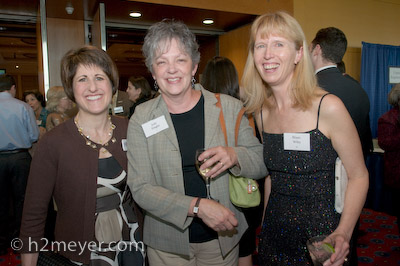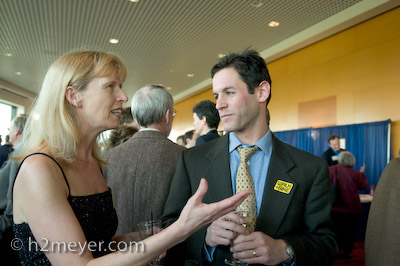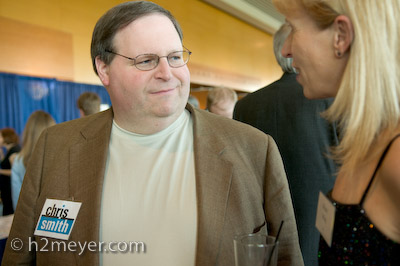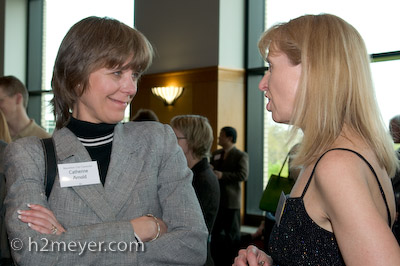Part of the diamond-cut life, in my view, is taking responsibility for our democracy by being politically involved. We need candidates who support sustainability. That plus my fondness for sociability and community is the reason I host a table of ten each year at the EcoProm, also known as the Oregon League of Conservation Voters (OLCV) ‘s annual dinner for the environment.

City Commissioner Sam Adams has OLCV’s endorsement (also my vote) in the race for mayor of Portland. People say he tends to hold grudges, but I found him gracious and forgiving when I forgot to let him speak last summer at a transportation-options awards meeting. (I apologized profusely.) Sam’s my man.

Jackie Dingfelder, running for Oregon state senator, is on the left and Judy Steigler (center) of Bend is running for the Oregon house of representatives. I got to know Jackie a bit recently at a house party, and discovered she shares my passion for renewable energy, transportation options and green-collar jobs. Judy is on a similar page; they both have OLCV’s endorsement and my own.

I first met Scott Bricker, above, when he did legislative affairs for the Bicycle Transportation Alliance. Now he is its executive director, and Portland, with a whopping 6% of its population commuting via bicycle and another 10% using bikes as their secondary commute-mode, just earned the first Platinum rating in the nation for its bicycle-friendliness. Scott’s excellent leadership has much to do with that.

Chris Smith (aka Citizen Smith, above) is running for Portland city commissioner, and is strong on sustainability in general and transportation options in particular. I like both him and another excellent candidate running for the same seat, Amanda Fritz (not pictured).

Katherine Arnold, above, is a Beaverton city commissioner up for re-election, and has OLCV’s endorsement as another green elected official. She is one of the good folks who helped approve my motion for the Leadership Beaverton program to add a Sustainability Day to its curriculum. I had the pleasure of serving with her for a time on the board of Leadership Beaverton (until my new job and commute to Salem led me to resign from that commitment).
My cool blog assistant, professional photographer Hanmi Meyer, took all these photos. Thanks Hanmi!











You must be logged in to post a comment.